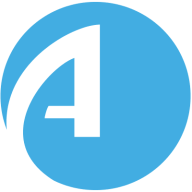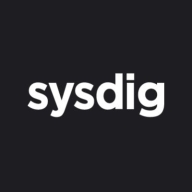


Sysdig Secure and Prevasio are prominent solutions in cybersecurity. Prevasio is favored for its features, while Sysdig Secure excels in pricing and customer support.
Features: Sysdig Secure offers robust container security, comprehensive monitoring, and efficient threat detection. Prevasio provides strong vulnerability scanning, effective risk assessment, and superior threat identification.
Room for Improvement: Sysdig Secure requires improvements in alert tuning, integration flexibility, and interface usability. Prevasio needs better reporting capabilities, a more streamlined interface, and enhanced ongoing support.
Ease of Deployment and Customer Service: Sysdig Secure is known for straightforward deployment and responsive service. Prevasio, although having a longer deployment process, offers thorough support during setup but needs better ongoing support responsiveness.
Pricing and ROI: Sysdig Secure offers cost efficiency with a high ROI, appealing to budget-conscious buyers. Prevasio, while initially more costly, provides a high ROI due to its advanced features, making the price worthwhile for some users.



SentinelOne Singularity Cloud Security protects cloud workloads, offering advanced threat detection and automated response. It integrates seamlessly with cloud environments and secures containerized applications and virtual machines against vulnerabilities.
SentinelOne Singularity Cloud Security is renowned for its efficiency in mitigating threats in real-time. The platform integrates effortlessly with existing cloud environments, ensuring robust cloud security management with minimal manual intervention. Securing containerized applications and virtual machines, it excels in threat intelligence and endpoint protection. However, improvements are needed in performance during high workload periods, and more integrations with third-party tools and better documentation would be beneficial. Users often find the installation process complex, support response times slow, and the dashboard's navigation unintuitive.
What are the key features of SentinelOne Singularity Cloud Security?In specific industries, SentinelOne Singularity Cloud Security is implemented to safeguard critical data and infrastructure. Organizations in finance, healthcare, and technology depend on its real-time threat detection and automated response to protect sensitive information. Its ability to secure containerized applications and virtual machines is particularly valuable in dynamic environments where rapid scaling is necessary.
Prevasio is an agentless cloud-native application protection platform (CNAPP) that provides increased visibility into security and compliance gaps, enabling cloud operations and security teams to prioritize risks and ensure compliance with internet security benchmarks.
Prevasio combines cloud-native security with SRI International's proprietary AI capabilities and AlgoSec’s expertise in securing 1,800 of the world’s most complex organizations.
In the cloud, every second counts. Attacks move at warp speed, and security teams must protect the business without slowing it down. Sysdig stops cloud attacks in real time, instantly detecting changes in risk with runtime insights, a unique AI architecture, and open source Falco. Sysdig delivers live visibility by correlating signals across cloud workloads, identities, and services to uncover hidden attack paths. By knowing what is running, teams can prioritize the vulnerabilities, misconfigurations, permissions, and threats that matter most. From prevention to defense, Sysdig helps enterprises move faster and focus on what matters: innovation.
Sysdig. Secure Every Second.
We monitor all Cloud-Native Application Protection Platforms (CNAPP) reviews to prevent fraudulent reviews and keep review quality high. We do not post reviews by company employees or direct competitors. We validate each review for authenticity via cross-reference with LinkedIn, and personal follow-up with the reviewer when necessary.